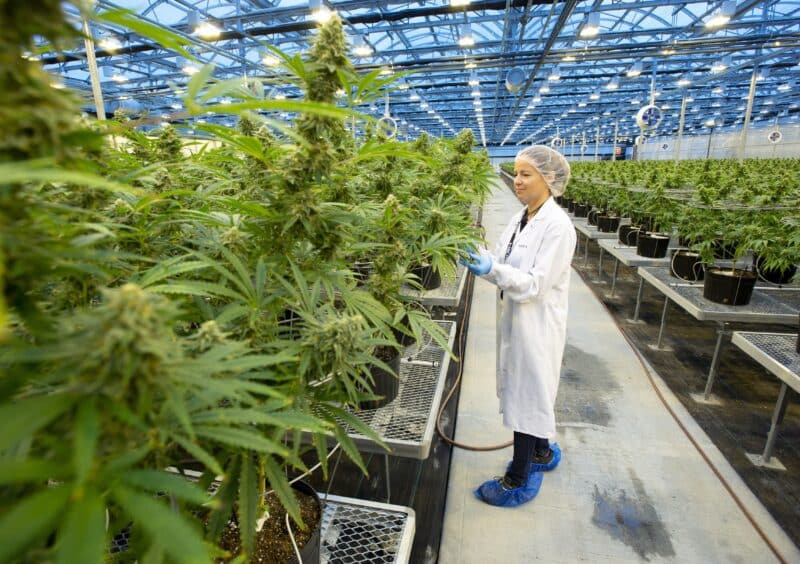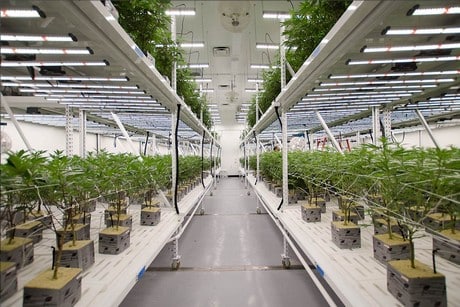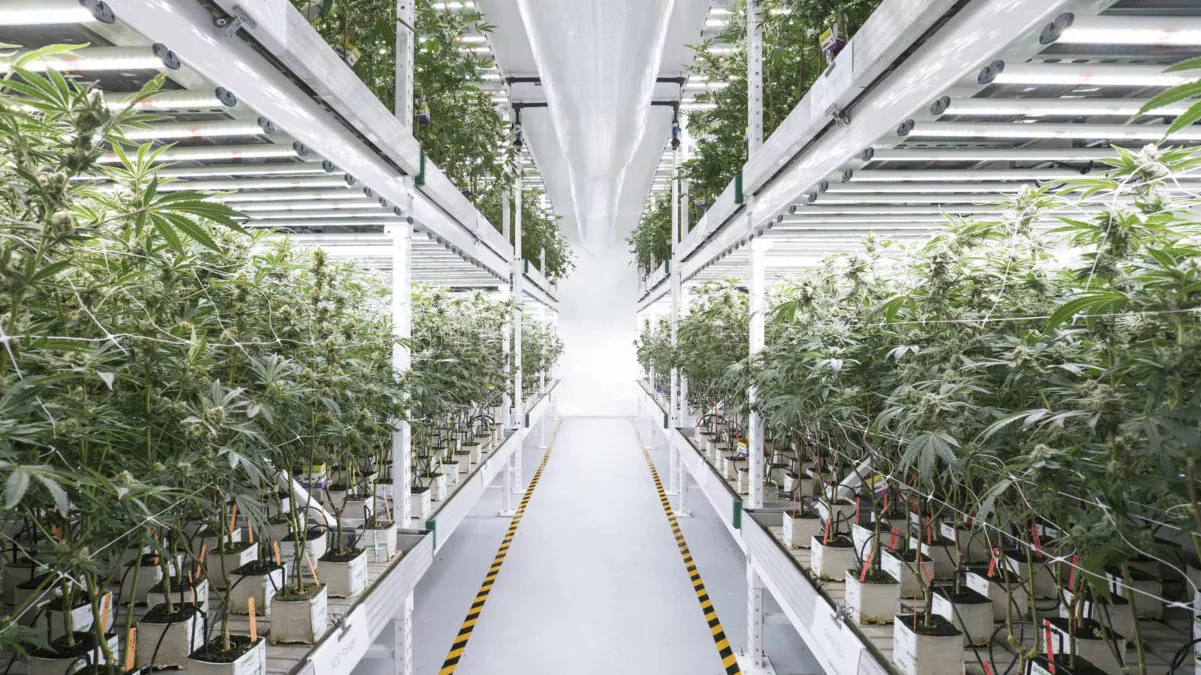Cannabis Grow Facility Flooring
As with any emerging industry, general acceptance and market growth govern cannabis cultivation. As a result, local governments pay more attention to how cannabis grow facilities are built and managed. In addition to the everyday business issues of building safety, employee working conditions, and tax contributions. Elected officials are increasingly under pressure from constituents to analyze the overall effect of facility growth on their communities.
High energy consumption for lighting in the grow room and increased water consumption is only part of the equation. The temperature and humidity required for a breeding facility can be equivalent to an indoor swimming pool. While heat and humidity are ideal for cannabis growth, they provide ideal conditions for fungus and other unwanted microorganisms to grow and multiply. Therefore, fumigation often plays to maintain plant health in a humid room climate.
The enrichment of indoor air with carbon dioxide (CO2), a common practice that increases crop yields, brings with it another set of health and safety considerations in densely populated urban environments. In addition to these challenges, many cannabis-growing facilities produce plants intended for pharmacological or nutritional purposes.
This requires scrutiny from regulators for the benefit of the consuming public. As a result, grow room managers and owners must stay abreast of industry developments regarding local and state regulations on their setup, general operations, and products.
Grow Rooms: Bare Concrete Floors
As an elementary building material, concrete is still the commercial and industrial construction leader. However, despite the many benefits of concrete floors, they can pose significant challenges specifically for cannabis grow spaces if left unprotected.
- Raw, untreated concrete is inherently porous and readily absorbs liquids and moisture from the environment. As a result, substances found in grow rooms such as fertilizers, fungicides, and other chemicals can seep through the porous concrete floor slab into the soil and groundwater. Whether organic or synthetic, levels of such substances can be very harmful to the environment.
- Whether in an existing or newly constructed facility, it is not uncommon for the vapor barrier of the suspended ceiling to be compromised during construction. When this occurs, moisture from the soil beneath the floor slab can penetrate the concrete and move osmotically upwards, creating a phenomenon known as Moisture Vapor Transmission (MVT). The resulting moisture and water vapor become increasingly alkaline as they rise through the concrete slab. MVT can cause blistering and other damage to floor coverings.
- Warm temperatures, regular watering of plants, and high relative humidity levels maintained in many grow rooms can weaken the structural integrity of unprotected grow room panels.
- In the confined space of a grow room, the warm, humid air invites microbes to grow. Therefore, food and pharmaceutical plants are high on the list of priorities for the hygiene level of the facility, as required by the Code.

Optimal Cannabis Facility Flooring Performance
In some places, cannabis cultivation facilities are already subject to strict building codes and regulations. No doubt, this will soon expand to other regions. For example, the Public Health Agency publishes building codes to ensure that cannabis facility floors meet standards. That reflects the food processing and pharmaceutical manufacturing industries, where hygiene, facility hygiene, and safety are paramount. In addition, raw, unprotected concrete floor slabs are generally not acceptable in this type of installation. Due to the material’s inherent porosity and absorbency.
Floors in grow rooms, such as those used in the food and pharmaceutical industries, should:

- Demonstrate excellent abrasion resistance, allowing the system to function under everyday wear and tear.
- Features customizable slip resistance options that can be offset with a simple cleaning.
- Facilitate using safety floor markings such as color-coded traffic and work area markers.
- It was formulated with low VOC and low odor chemicals that meet all EPA and similar regulations.
- Be able to contribute LEED green building credits if desired
- Include options to restore old or damaged concrete surfaces to allow existing plant assets to be reused instead of having to demolish them. Which unnecessarily contributes to landfill waste.
- Withstands and performs in continuously wet grow rooms without deteriorating.
- Complies with FDA, USDA, EPA, ADA, OSHA, and local regulations and guidelines
- Include MVT mitigation solutions if on-site water vapor transmission issues exist.
- Provide waterproof underlay options for multi-story installations
- Show excellent resistance to a wide range of chemicals, fertilizers, and substances with extreme pH values
Finding an affordable flooring system with all of the above features may seem daunting. Luckily, innovative manufacturers are now offering cannabis facility flooring that meets the needs of growers in terms of hygiene, regulatory compliance, durability, and budget.
Epoxy Coatings Value for Cannabis Facility Flooring
Choosing the right flooring solutions for a particular breeding facility can be one of an owner or manager’s most important decisions. Because floors exist throughout the structure, poor selection and compromised protection of concrete slabs can result in devastating profits and returns.
Few facilities can afford the inconvenience and expense of an otherwise unnecessary floor repair or replacement. Suddenly moving awkward plant beds and heavy planters to give workers access to the ground area can be a headache. Additionally, the unplanned downtime and general juggling of resources inevitably make a strong case for investing in optimal grow room epoxy flooring.
Public health guidelines for cannabis growers in different parts of the country are increasingly similar to those for food processing. Typical requirements include smooth, durable, non-absorbent floor surfaces that are easy to clean and in good condition. With an appropriate floor slope to a sanitary floor drain, without accumulation and an integral floor-to-wall cornice base. The floor cannot meet these guidelines with raw concrete alone.
